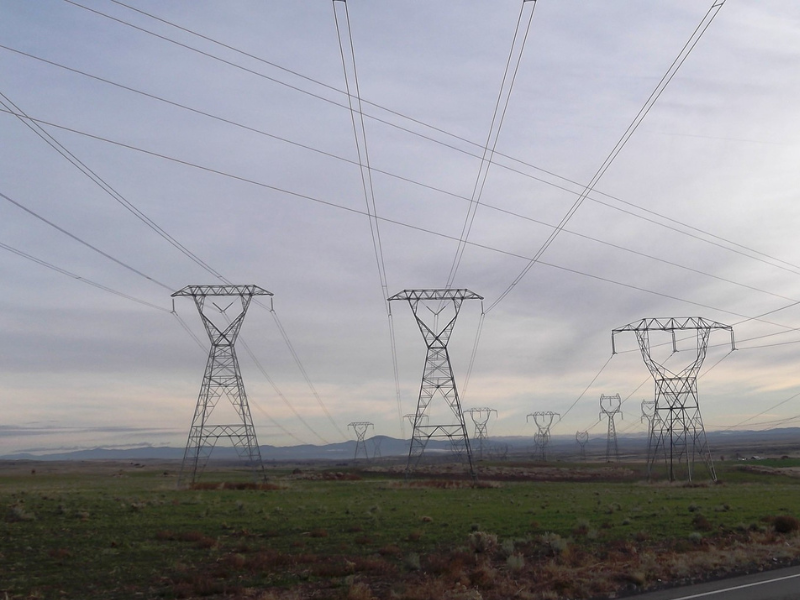In its latest long-range weather outlook for June, July and August, the National Oceanic and Atmospheric Administration (NOAA) is predicting that most U.S. states likely will experience a hotter-than-average summer.
At the same time, the North American Electric Reliability Corporation (NERC) recently issued a sobering assessment of the U.S. power grid as demand for electricity — mainly for air conditioning — accelerates in the coming months, a situation that has been exacerbated by premature retirements of base-load generation. “We are facing an absolute step-change,” according to John Moura, NERC’s director of Reliability Assessment and Performance Analysis. “Over the past five years, NERC has seen a steady deterioration in the risk profile of the grid.”
The Federal Energy Regulatory Commission (FERC) also has warned of dire consequences from the loss of base-load capacity. FERC Commissioner Mark Christie recently told the Senate Energy and Natural Resources Committee that “the United States is heading for a reliability crisis. I do not use the term ‘crisis’ for melodrama, but because it is an accurate description of what we are facing.”
Making matters worse, the newly proposed “carbon capture” rules from the Environmental Protection Agency, if adopted, would further accelerate fossil-fuel plant closures.
In Texas — which consumes more electricity by far than any other state — Public Utility Commission Chair Peter Lake warns that the state’s main power grid is at risk for outages this summer if wind turbines don’t produce enough electricity when it’s needed. He also makes the case that more on-demand power sources, such as natural gas-fueled power plants or batteries, need to be built to ensure long-term grid reliability.
Blackouts and brownouts have become more frequent and costly across America, in part because of a lack of new investment in transmission and distribution. For example, the nation’s investor-owned utilities last year proposed about $13 billion in grid modernization investments, but state and federal regulators approved less than $500 million. Growing pushback against large-scale wind and solar projects also has contributed to the slow pace of upgrading the nation’s power grids.
But perhaps the most serious threat to grid integrity has been the loss of base-load coal and nuclear power plants. A decade ago, 1,308 coal-fired plants supplied 38 percent of the nation’s power. Today, only 224 plants remain in operation, accounting for about 20 percent of installed generating capacity. Carbon-free nuclear plants are also being retired prematurely. A decade ago, 110 nuclear generators supplied about 20 percent of the electrons to the nation’s power grids. Today, only 92 plants remain in service (though two are under construction). Fortunately, greater operating efficiencies have kept nuclear’s share relatively stable.
The electrification of the U.S. economy will require huge investments in new generation. For example, switching industrial processes to run on clean electricity — electrification — would increase annual electricity demand by 6,000 to 10,000 terawatt-hours. That’s more than total current national demand (4,300 TWh) and more than switching all cars to electric vehicles (2,000 TWhs). Our aging grid infrastructure, coupled with the loss of base-load power generation, leaves America ill-prepared to meet these demands.
Today, investment in renewable generation far exceeds that of conventional power plants. Without question, this trend has been a plus for the environment and is largely responsible for dramatically lower greenhouse gas emissions in the power sector. But because of their intermittency, wind and solar pose serious challenges to grid integrity and reliability. Large-scale battery storage may help offset this intermittency, but that’s decades away. In the meantime, base-load dispatchable power — namely, coal, nuclear and large gas-fired plants — will be required for maintaining a reliable power grid.
Eliminating policies that cause market distortions, such as the huge subsidies for wind, solar and batteries, would be one option for sustaining base-load power generation. But because of their political support, these measures aren’t going away in the foreseeable future. Indeed, the Inflation Reduction Act of 2022 extended and broadened the investment and production tax credits for renewables.
Instead, to keep base-load power in the mix and encourage new investment in dispatch-able generation, we need to price electricity in a manner that recognizes the value of coal and nuclear facilities in providing grid security and an adequate reserve margin to meet peak demand.





